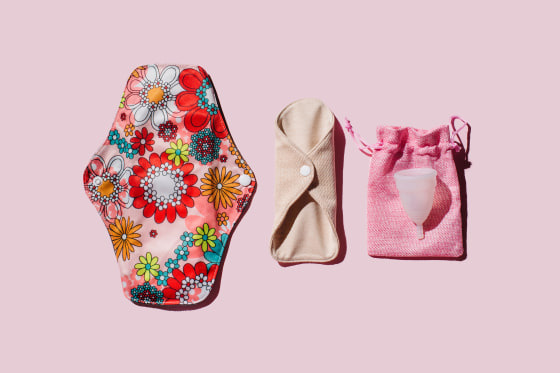Period Panties and Healthier Alternatives: A Modern Guide to Menstrual Care

The menstrual care landscape has evolved dramatically in recent years, with period panties emerging as a popular alternative to traditional disposable products. But are they truly the healthiest option? Let’s explore period underwear and other sustainable alternatives that prioritize both your health and environmental well-being.
What Are Period Panties?
Period panties are specially designed underwear with built-in absorbent layers that can replace or supplement traditional menstrual products. These innovative garments feature multiple layers of absorbent materials, typically including moisture-wicking fabrics, absorbent cores, and leak-proof barriers.
How They Work
The technology behind period underwear involves several key components:
-
Moisture-wicking top layer that keeps you feeling dry
-
Super-absorbent middle layers that can hold multiple tampons’ worth of fluid
-
Leak-proof outer barrier that prevents stains on clothing
-
Antimicrobial treatments in some brands to reduce odor
Health Benefits of Period Panties
Reduced Chemical Exposure
Unlike conventional tampons and pads that may contain bleaches, fragrances, and other chemicals, quality period underwear is typically made from organic cotton or other natural materials. This reduces your exposure to potentially irritating substances that can disrupt your vaginal microbiome.
Lower Risk of Toxic Shock Syndrome (TSS)
Since period panties don’t require insertion like tampons, they eliminate the risk of TSS, a rare but serious bacterial infection associated with tampon use.
Better pH Balance Maintenance
The breathable materials used in period underwear allow for better air circulation compared to plastic-backed disposable pads, helping maintain your natural pH balance and reducing the risk of yeast infections and bacterial vaginosis.
Other Healthy Menstrual Alternatives
Menstrual Cups
Made from medical-grade silicone or rubber, menstrual cups are:
-
Chemical-free and hypoallergenic
-
Long-lasting (up to 10 ye
-
ars with proper care)
-
Cost-effective over time
-
Environmentally friendly
Organic Cotton Tampons and Pads
If you prefer disposable options, choose products made from:
-
100% organic cotton
-
No synthetic fragrances or bleaches
-
Biodegradable materials when possible
Reusable Cloth Pads
Similar benefits to period panties:
-
Made from natural, breathable materials
-
No chemical exposure
-
Customizable absorbency
-
Washable and reusable
Making the Healthiest Choice
Consider Your Lifestyle
-
Active lifestyle: Period underwear or menstrual cups offer freedom of movement
-
Heavy flow: Look for high-absorbency options or combine methods
-
Sensitive skin: Prioritize organic, chemical-free materials
Quality Matters
When choosing period underwear:
-
Research the materials used
-
Look for OEKO-TEX certified fabrics
-
Choose brands with transparent manufacturing processes
-
Read reviews from other users with similar needs
Proper Care and Hygiene
Regardless of which alternative you choose:
-
Follow washing instructions carefully
-
Replace products according to manufacturer guidelines
-
Maintain good menstrual hygiene practices
-
Consult with healthcare providers if you experience unusual symptoms
Environmental and Economic Benefits
Sustainability Impact
Switching to reusable menstrual products can:
-
Reduce landfill waste significantly
-
Decrease plastic consumption
-
Lower your carbon footprint
-
Support more sustainable manufacturing practices
Long-term Savings
While the initial investment may be higher, reusable products like period underwear and menstrual cups can save hundreds of dollars over their lifespan compared to continuously purchasing disposable products.
Getting Started
Transition Tips
-
Start gradually: Try period underwear on lighter flow days first
-
Have backups: Keep some t
-
raditional products while transitioning
-
Invest in multiple pairs: Having 3-4 pairs ensures you’re never without clean underwear
-
Track your cycle: Understanding your flow helps you choose the right absorbency levels
What to Look For
When shopping for period underwear:
-
Absorbency levels that match your flow
-
Comfortable fit that doesn’t bunch or ride up
-
Quality construction with reinforced seams
-
Easy care instructions that fit your lifestyle
The Bottom Line
Period panties and other reusable menstrual alternatives represent a healthier approach to period care by reducing chemical exposure, supporting natural pH balance, and eliminating risks associated with certain disposable products. While they may require a higher upfront investment and a learning curve, the long-term benefits for your health, wallet, and the environment make them worthy of consideration.
The “healthiest” option ultimately depends on your individual needs, preferences, and circumstances. Whether you choose period underwear, menstrual cups, organic disposables, or a combination of methods, the key is selecting products made from safe, high-quality materials and maintaining proper hygiene practices.
Remember to consult with your healthcare provider if you have specific concerns about menstrual products or experience any unusual symptoms during your period. Your comfort and health should always be the top priority in choosing menstrual care products.

